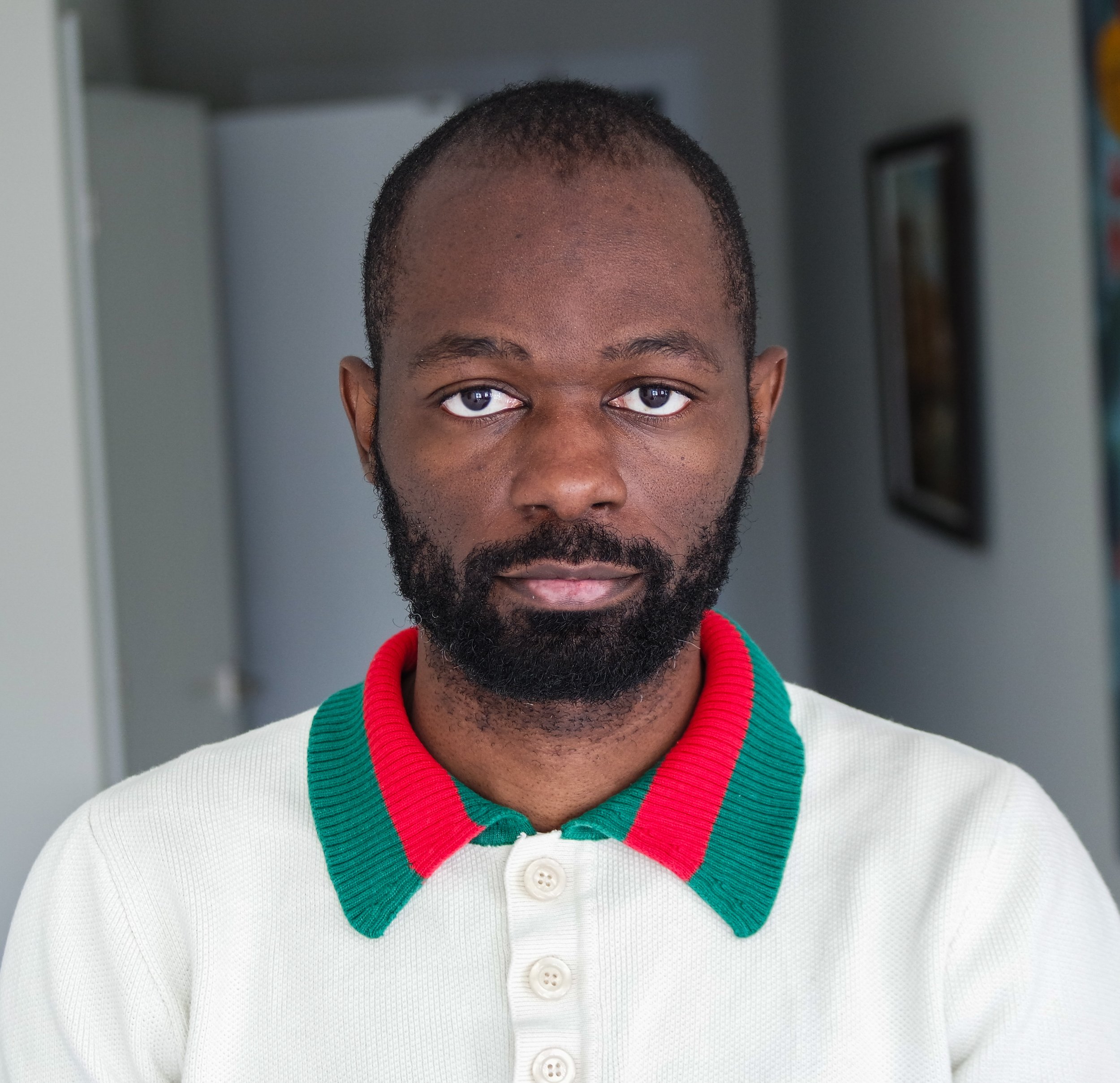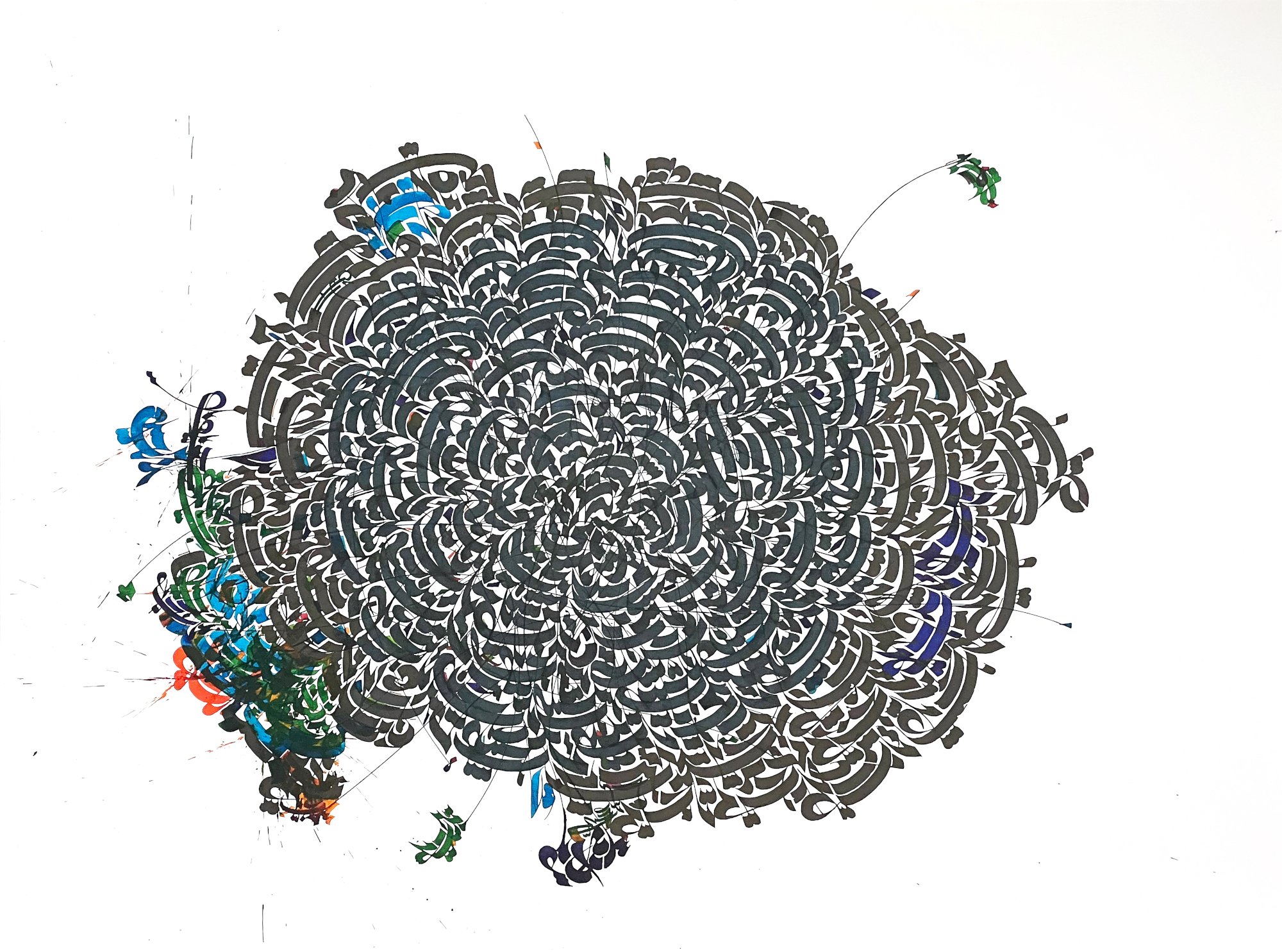10 Questions with Mike Kasongo
Mike Kasongo is a self-taught artist born in Kinshasa, D.R. Congo, and currently based in Halifax, Nova Scotia, Canada. He harmoniously blends the rich cultural tapestry of African heritage with the timeless elegance of European Renaissance art. Through masterful creations, he invites viewers on a journey that transcends borders.
Starting with charcoal and graphite, Mike taught himself shading techniques by observing human expressions and emotions. Transitioning to oil painting in 2017, he has since embarked on a continuous exploration of ideas and techniques, delving deeper into his own psyche and cultural roots.
Passion and dedication shine through each piece as Mike aims to evoke emotion, inspire thought, and provoke meaningful reflections on the human condition through an unyielding pursuit of growth from the perspective of a modern African man.
Mike Kasongo - Portrait
ARTIST STATEMENT
Mike Kasongo’s passion and dedication shine through each piece as he aims to evoke emotion, inspire thought, and provoke meaningful reflections on the human condition through an unyielding pursuit of growth.
Bath © Mike Kasongo
INTERVIEW
As you mention in your biography, you are a self-taught artist. How did you first become interested in art, and what motivated you to teach yourself?
I became interested in art because as a kid, I loved cartoons so much that I decided to start drawing my favourite cartoon characters. This made me realize that I was good at drawing. From this point, I began drawing my favourite artists and things that were of interest to me. Being exposed to art through the internet and knowing that I had the same skill set as most of the artists that I loved motivated me to create my own artwork, too.
What has been the most challenging aspect of being a self-taught artist, and what has been the most rewarding?
The most challenging aspect of being a self-taught artist is understanding the art world and how to navigate through it. Being a self-taught artist allows for self-discovery, which leads to personal growth and a unique perspective on art that is free from the constraints of education.
Jams © Mike Kasongo
What do you wish you knew about contemporary art before you embarked on this journey?
I wish I knew that the contemporary art world is very gatekept.
Let's talk about your work. How has your art evolved since you first started, and what have you learned along the way?
My earlier work was mostly a display of my artistic skill set. It was about how beautiful an image I could make. But nowadays, my work carries deeper meanings and ideas that reflect my thoughts and state of mind. Along the way, I have learned to open up more in my artwork and share my thoughts openly. I believe this gives my artwork a soul.
How does your Congolese heritage influence your art?
I sometimes incorporate certain elements of congolese culture in my artwork such as leopards, plants or trees that I used to see around me when I lived in Congo. As an example, I painted a self portrait where I am seen carrying a leopard (for the record, I have never carried a leopard in real life). According to Congolese culture, this can represent a cultural narrative about bravery, guardianship and the preservation of cultural heritage.
Resilience © Mike Kasongo
Thee Landscape © Mike Kasongo
What aspects of European Renaissance art do you incorporate into your work, and why
The high level of attention to detail and the different lighting techniques used in Renaissance art to depict subjects are some of the elements that I include in my own work. I incorporate these aspects in my own artwork because I have spent countless hours staring at these kinds of artworks both online and in person.
How do you harmonize African cultural elements with European Renaissance styles in your creations?
Renaissance art is characterized by its use of perspective, proportion, and balance. When working on a painting that discusses an African cultural context, I tend to incorporate proportions and symmetries that echo Renaissance techniques.
Speaking of your work, can you walk us through your creative process, from idea to finished piece?
It all starts with a thought; from the initial thought, I develop an idea that expounds on the initial thought. After that, I drew multiple sketches on my iPad, trying to find a graphic representation that fit the idea. Once I know what the painting will look like, I buy a canvas and start painting. I listen to a lot of music while painting; music helps me connect with certain emotions that I want to add to the artwork. After a few weeks of listening to music and painting, I would complete the painting.
Osmosis © Mike Kasongo
What do you hope viewers take away from your art?
I hope that viewers can connect to my work deeply and understand the little messages and ideas that I am trying to communicate. It's like I want them to read the message in the bottle and decipher it.
And lastly, are there any new projects or themes you're excited to explore in the future?
I am excited about exploring introspective themes such personal identity, confidence and emotional resilience. Besides that, I am excited about having one of my paintings shown at the Art Gallery of Nova Scotia here in Halifax from this June 2024 until summer 2025.
Artist’s Talk
Al-Tiba9 Interviews is a promotional platform for artists to articulate their vision and engage them with our diverse readership through a published art dialogue. The artists are interviewed by Mohamed Benhadj, the founder & curator of Al-Tiba9, to highlight their artistic careers and introduce them to the international contemporary art scene across our vast network of museums, galleries, art professionals, art dealers, collectors, and art lovers across the globe.




















